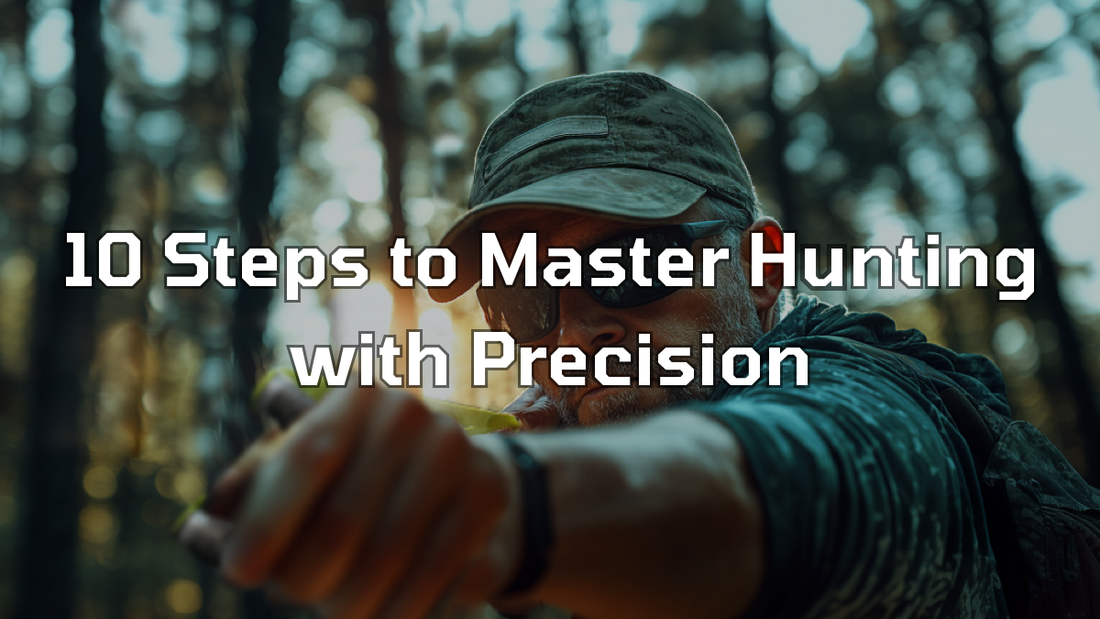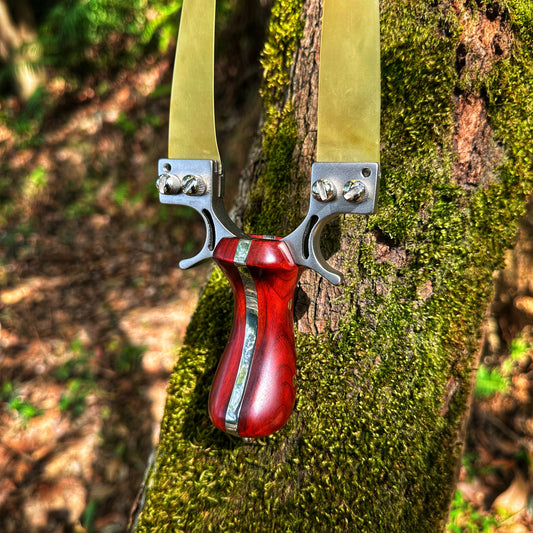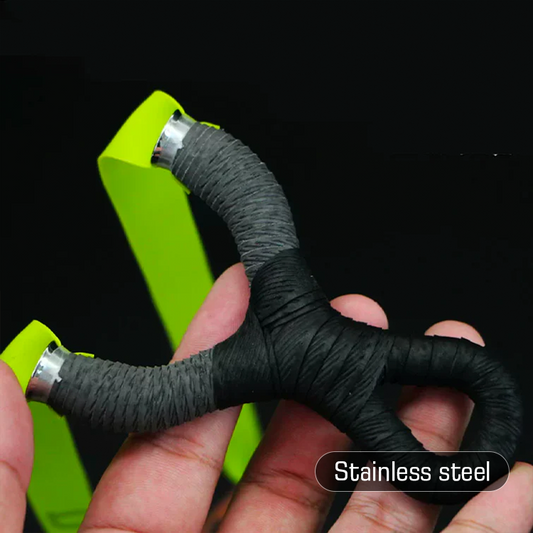
How to Use a Slingshot: 10 Steps to Master Hunting with Precision | HawkSling Guide
Share
Introduction
Welcome to the HawkSling guide for mastering the art of hunting with a slingshot. Hunting with a slingshot requires a blend of skill, patience, and precision, making it a rewarding pursuit for outdoor enthusiasts. This guide outlines ten essential steps that will elevate your accuracy, improve your form, and give you confidence in the field. By honing these techniques with your HawkSling hunting slingshot, you’ll gain the expertise to become a precise and effective hunter.
Step 1: Choose the Right Ammo
The success of your shot begins with selecting the right ammunition. For hunting, opt for round, dense objects like marbles or stainless steel ball bearings. These provide consistent weight and shape, which are crucial for accuracy. Using irregular objects, like stones, can cause unpredictable flight paths. Precision is essential, and using high-quality ammo will keep your shots powerful and consistent, essential for hitting small game accurately.
Step 2: Load the Slingshot Properly
Start by holding the HawkSling slingshot base firmly with your dominant hand. Place your chosen ammo in the center of the pouch with your other hand. Positioning the ammo correctly is critical—it ensures your shot is straight and true. Holding your slingshot firmly at the base keeps it steady, allowing you to focus on your target without worrying about grip stability.

Step 3: Secure Your Ammo with a Relaxed Hold
With your thumb and index finger, gently hold the ammo in place within the pouch. Avoid squeezing too tightly; a relaxed hold prevents shifting and allows for a smoother release. The aim here is control without strain. When you release, the ammo will exit the pouch without resistance, leading to a cleaner, more accurate shot.
Step 4: Establish a Consistent Grip
Consistency in your grip is essential for accuracy in slingshot hunting. Some hunters prefer a vertical hold on the slingshot forks, while others feel more comfortable angling the forks slightly. Test both methods to see which feels natural and maintain this grip every time you shoot. Consistency in form helps build muscle memory, which is crucial when aiming at a moving target.

Step 5: Position Your Body Correctly
Stand with your body angled to the side, with the shoulder of your shooting arm facing your target. This stance aligns your body with the trajectory of your shot, promoting stability. Keep your feet shoulder-width apart to form a solid base that allows for smooth, steady movement, essential for accuracy in hunting situations. This posture will enhance your control over each shot, even on uneven ground.
Step 6: Aim Slightly Above Your Target
Aiming is an art in itself. Position your sight slightly above the target to account for the arc of the ammo’s path. This compensation allows for gravity and helps your shot land precisely where intended. Keeping both eyes open as you aim helps with spatial awareness, giving you a natural alignment to judge distances and aim accurately without overthinking.
Step 7: Draw Back Smoothly for a Full Power Shot
Pull the ammo back slowly with your free hand until the slingshot band is fully stretched. This full draw increases the power and speed of your shot. Maintain a steady, smooth pull without jerking, as sudden movements can affect accuracy. Drawing consistently will build strength and control, both vital in becoming proficient with a hunting slingshot.
Step 8: Control Your Breathing for Steady Aim
Breathing control can make a significant difference in your shot. Before releasing, inhale deeply, exhale fully, and release the shot in the natural pause after the exhale. This technique keeps your hands steady, allowing for better control over your release and improved shot accuracy. Over time, controlled breathing will become second nature, helping you maintain composure during crucial moments.
Step 9: Release the Ammo with a Follow-Through
To release the ammo, let go smoothly and add a slight forward flick of the wrist. This follow-through motion enhances shot velocity and keeps the shot trajectory clean. A gentle wrist flick also maintains momentum and directs the ammo toward the target more effectively. Avoid abrupt or jerky releases, which can throw off your aim and reduce shot power.
Step 10: Regularly Inspect and Maintain Your Slingshot
Frequent use can wear on your slingshot bands and forks, impacting performance and safety. Regularly inspect the bands and replace them if they show signs of wear. Also, check the forks for any cracks or damage to prevent breakage. Maintaining your HawkSling slingshot keeps it reliable and safe, ensuring it’s ready when you need it most in the field.
Conclusion
Mastering slingshot hunting is an exciting journey that blends skill and precision with the right equipment. HawkSling hunting slingshots are designed for professionals and outdoor enthusiasts, providing durability, accuracy, and reliability in every shot. Following these ten steps will help you develop a sharp, effective technique, enhancing your experience in the great outdoors. Remember, practice and consistency are key, and always handle your slingshot with care to make the most of each hunt.
For hunters seeking a durable and versatile tool, the HawkSling Stainless Steel Lightweight Slingshot is an exceptional choice. Engineered with a sleek, one-piece stainless steel frame, this slingshot is both robust and light, making it easy to maneuver for precise, quick responses in the field. Its integrated handle strap provides a secure grip, ensuring comfort and control even in challenging conditions.
This lightweight design doesn’t compromise strength; instead, it offers a steady and reliable shooting experience, ideal for outdoor hunting activities. Whether you’re aiming for accuracy on a cold winter morning or making quick adjustments on a moving target, the HawkSling Stainless Steel Lightweight Slingshot stands out as a durable and effective tool, built to perform time and time again.





























